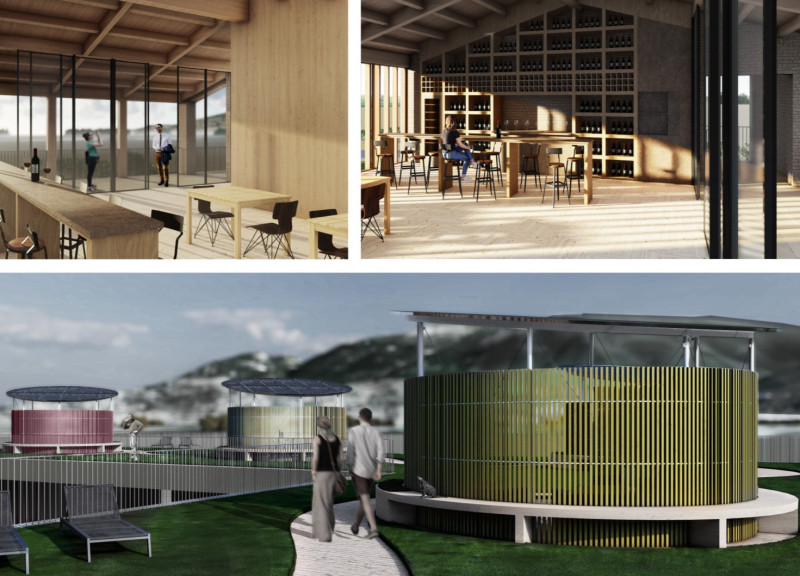5 key facts about this project
The project "Stages of Taste" sits within a scenic landscape designed to connect the built environment to its natural surroundings. It draws inspiration from the forms of vines and grapes, capturing the essence of local viticulture. The goal is to create a destination focused on wine tasting while preserving the existing "Tili Farmhouse" through careful restoration and thoughtful design.
Integration of Existing Structures
A strong emphasis is placed on preserving the historical character of the "Tili Farmhouse." The building undergoes partial recovery and structural consolidation to maintain its integrity. Surrounding it are five cylindrical guest houses, arranged to form a courtyard. This layout encourages social interaction among visitors while also ensuring their privacy. The spaces are designed to promote a sense of community within a natural setting.
Guest Experience and Tasting Pavilions
Five pavilions play a crucial role in the project, offering unique wine tasting experiences. Each pavilion is dedicated to a specific wine produced on-site, allowing visitors to explore distinct flavor profiles. These pavilions are thoughtfully placed to create inviting spaces that blend educational elements with a sensory experience. Their placement supports a deeper connection to the landscape, fostering engagement with nature.
Material Choices and Sustainability
The choice of materials is carefully considered, focusing on sustainability and contextual relevance. Laminated wood is used for structural elements, creating a warm and welcoming atmosphere. The farmhouse's restoration emphasizes reusing original bricks, which helps minimize waste while preserving its historical significance. This commitment to environmentally responsible methods ensures the project is in harmony with both its past and its present.
The design is enhanced by flat garden roofs, which serve functional purposes while visually connecting the guest houses back to the "Tili Farmhouse." These roofs provide opportunities for outdoor activities and create a dynamic interplay between light and shadow throughout the day. Visitors can engage with the architecture in various ways, experiencing the space differently as the sun moves across the sky.






















































